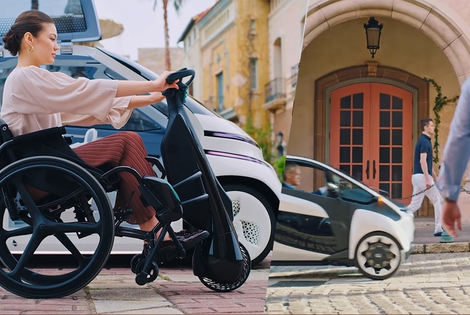
Milan has announced one of Europe’s most ambitious mobility schemes, known as Strade Aperte (open roads). Its goal is to reduce cars in phase 2 of the lockdown by increasing bike lanes and pedestrian areas.
In Gothenburg, Sweden, the first route of electric and hybrid zero emissions buses powered by 100% renewable energy and zero now in service.
3 electric buses and 7 hybrid buses will be part of the fleet of public transport of the city of Gothenburg. These vehicles will be serving Route 55 and will be powered by electricity generated from renewable energy, especially wind power and hydropower.
The fleet of buses crossing some areas of the city centre, more specifically the University and Science Park districts, stretching from Chalmersplatsen to Lindelholmen, will be silent and made by zero emissions vehicles.
All the buses are produced by Volvo, which has been working for years on the electrification of its models, especially those employed for public transported, as Niklas Gustafsson, Chief Sustainability Officer of Volvo Group, stated: “The Volvo Group aims to be the world leader in sustainable transport solutions. A unique collaboration in Gothenburg enables us to launch the electric bus route here and remain a leader in the development of future public transport.”
Route 55, whose buses will be also equipped with WiFi and phone charging facilities, belongs to a larger project called ElectriCity, which will see the cooperation of several parties, including public administrations, universities, research organisations and private automotive groups.
ElectriCity and route 55 are concrete proof of how Gothenburg is being developed into a denser, more sustainable and open city with attractive public spaces and a rich urban life. The project also demonstrates our ambition and strategy to attract expertise and investment that help reduce environmental impact and develop collaboration between authorities, industry and academia,” said Anneli Hulthén Chair of the City Executive in Gothenburg.
Siamo anche su WhatsApp. Segui il canale ufficiale LifeGate per restare aggiornata, aggiornato sulle ultime notizie e sulle nostre attività.
![]()
Quest'opera è distribuita con Licenza Creative Commons Attribuzione - Non commerciale - Non opere derivate 4.0 Internazionale.
Milan has announced one of Europe’s most ambitious mobility schemes, known as Strade Aperte (open roads). Its goal is to reduce cars in phase 2 of the lockdown by increasing bike lanes and pedestrian areas.
Formula 1, the world’s most important auto racing championship, has decided to turn the page and aim for carbon neutrality with the support of its teams, drivers and the whole racing circus.
Toyota and LifeGate began telling the story of hybrid mobility back in 2006, now, on the road to the Tokyo 2020 Olympics, they’re still treading the path of sustainable mobility. Here are the main steps of the journey.
Germany’s first solar bicycle lane could be the prototype for the roads of the future. The photovoltaic tiles melt snow and ice, and are capable of absorbing noise.
The Vespa is back in an electric version. Production has just started and the first models can be reserved online starting from October.
The city of Utrecht, in the Netherlands, is home to a bridge for cycling and walking that stretches over roof garden of a Montessori school. This project enhances practicality and will allow families to bring children to school by bike, passing through green areas. Despite their functionality, bridges are often seen as an infrastructure that is
The Lego hair bike helmet is the latest Internet craze. For now it’s just a prototype but production on a large scale will probably start soon.
Just as fires often give way to new growth, after the Dieselgate scandal, which saw Volkswagen cheating on US emission rules, the German car manufacturer radically changed course, beginning to focus on sustainable mobility. The German car company aims to propose thirty zero-emission models and produce at least one million battery electric vehicles by 2025. An ambitious mission
Sustainable, two-wheel mobility is triumphing in Copenhagen. After years of investments, policies, and infrastructural changes, bikes now outnumber cars in the city centre. The website Copenhagenize has released data linked to the number of vehicles entering the city centre, which are monitored by the city’s administration on a daily basis. Last year, 265,700 bikes have entered







